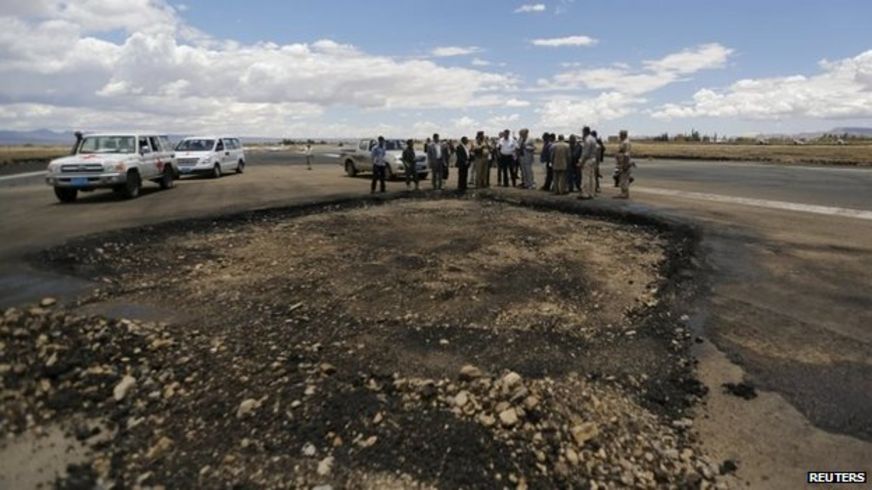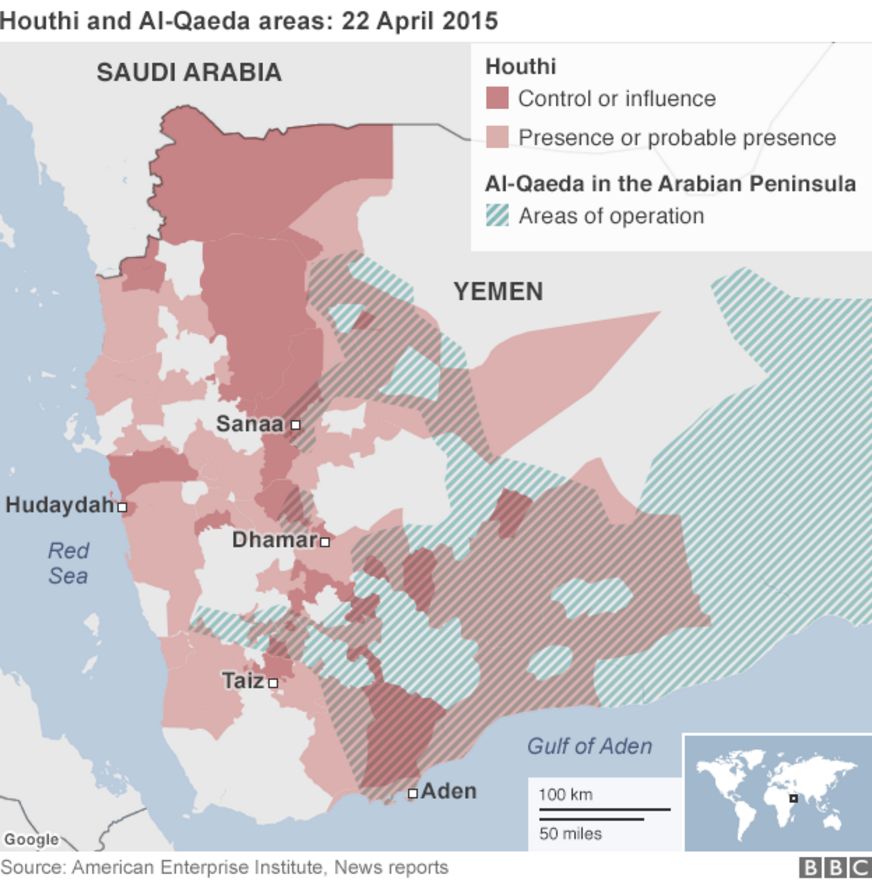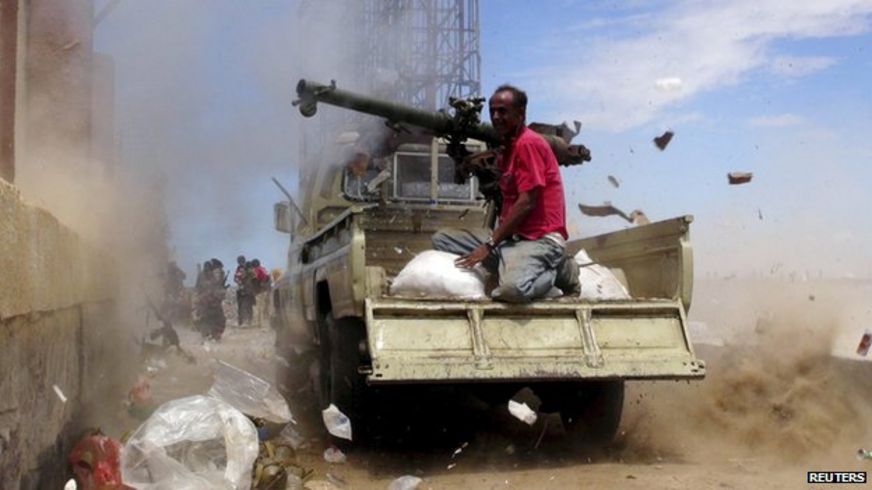Two aid groups have made an urgent call to the Saudi-led coalition battling Houthi rebels in Yemen for unobstructed access, as the conflict spreads.
The International Committee of the Red Cross and Medecine
Sans Frontieres expressed concern about the damage caused by the bombing of key airports.
Sans Frontieres expressed concern about the damage caused by the bombing of key airports.
The disruption of infrastructure, they said, was having alarming consequences.
Meanwhile, rebels have shelled the Saudi border area of Najran. Unverified reports said two Saudi civilians died.
Saudi Arabian Airlines, the national carrier, suspended flights to Najran and the region's schools were closed.
The attack comes four days after Saudi Arabia repelled a major assault by Houthis on border posts in Najran. Three Saudi troops and "dozens" of rebels were killed in the clash, Saudi officials said.
'Harsh restrictions'
In Yemen, the Saudi-led coalition has said it is considering temporary halts in its air strikes to allow for aid deliveries.
Air strikes and fighting on the ground in Yemen have left more than 646 civilians dead, since 26 March, according to the UN.
The ICRC and MSF said they were extremely concerned about the severe damage caused by recent coalition attacks on airports in the capital, Sanaa, and the Red Sea port city of Hudaydah.

The air strikes had obstructed delivery of much-needed humanitarian assistance and the movement of humanitarian personnel, they warned.
"Yemen depends almost completely on imports of food and medication, especially for the treatment of chronic diseases", said Cedric Schweizer, who heads a team of 250 ICRC staff in Yemen.
"The harsh restrictions on importations imposed by the coalition for the past six weeks, added to the extreme fuel shortages, have made the daily lives of Yemenis unbearable, and their suffering immense," he added.

The disruption of the key logistic infrastructure, including airports, sea ports, bridges and roads was having alarming consequences on the civilian population, and the humanitarian situation had now become catastrophic, the ICRC and MSF warned.
Checkpoints by the different armed factions had also obstructed the delivery of urgent medical supplies to hospitals and had prevented patients and the wounded reaching them, they added.
Civilians 'targeted'
The UN high commissioner for human rights has meanwhile said the coalition must stop the intentional targeting of civilians not taking part directly in hostilities.

In one incident on 1 May, at least 17 civilians were killed, including four children and nine women, in a strike that allegedly targeted the home of a Houthi leader in Sanaa, spokeswoman Ravina Shamdasani said in a statement on Tuesday.
The 10-nation coalition, which was joined by Senegal on Monday, has said it is seeking to defend the government of Yemen's President Abdrabbuh Mansour Hadi.
He fled the country at the end of March after rebel forces and allied army units loyal to ousted former president Ali Abdullah Saleh attacked the southern port city of Aden.
Mr Hadi had taken refuge there the previous month after the Houthis consolidated their control of Sanaa and placed him and members of the cabinet under house arrest.
On Sunday, it was reported that Yemenis believed to have received training and weapons from the coalition had arrived by sea in Aden to assist Southern militiamen who have been battling rebel fighters and allied security forces there.

Comentarios
Publicar un comentario